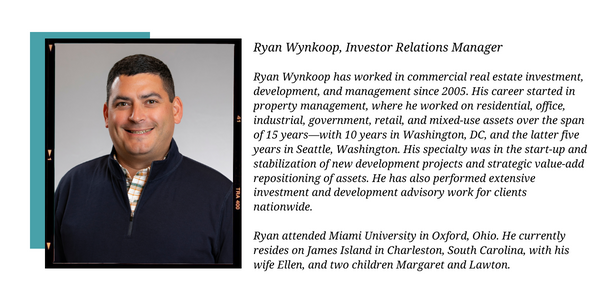September 26, 2023
By: Ryan Wynkoop, Investor Relations Manager
What is the correlation between Cap Rate and ROI?
Cap Rate and ROI are common terms in real estate deal projections. It is important investors understand how they are determined and how they impact a real estate deal.
Cap Rate simply stands for Capitalization Rate. This is a valuation calculation used to compare different real estate investments.
It is calculated as the ratio between the annual net operating income (NOI) of the property against its current market value.
That market value will typically fluctuate based on the current cost of debt, other elements specific to the property type, and the submarket that the property is located in.
There are multiple ways to calculate the Cap Rate depending on your inputs and what you are trying to determine. You only need two of the three figures to get the third (Cap Rate, NOI, Value).
Below are the various ways you can calculate the cap rate:
Cap Rate = NOI / Value
or
Value x Cap Rate = NOI
or
NOI / Cap Rate = Value
Now, what is ROI?
This simply means the return on investment. Cap Rates, NOI, and value all indicate your return on investment.
It’s quite obvious that the higher the income and the value, the better the investment. But inversely, a lower Cap Rate actually means a higher value and higher NOI.
What drives Cap Rates up and down?
The cost of debt is a major factor because investors often use various amounts of leverage to acquire properties. When interest rates are high, Cap Rates often rise as a result.
Also, the strength of a property location can drive Cap Rates lower and values higher because more investors are competing to acquire properties in that space. Their stability as an investment type commands a higher value.
In addition, sometimes Cap Rates in specific asset classes—multifamily or industrial, for example—are lower than other asset classes. This is determined by the market and typically indicates both the scarcity of product available and competition for this asset class as an investment.
How should you consider Cap Rates and ROI when researching an investment?
The short answer is that it is most advantageous to invest when indications are that Cap Rates will fall and compress, which would lead to higher value.
This typically happens in markets that are growing or improving, where there is a lack of supply for the asset class in that market. Cap Rates will also compress when interest rates fall and the cost of debt becomes cheaper.
If income remains the same, but interest rates fall and Cap Rates fall as a result, that would command a higher value in the Cap Rate. An investor would have acquired the property at the higher Cap Rate.
The value would then improve because of the cheaper cost of capital and better leverage that a takeout buyer could use when they sell it.
At Ashcroft Capital, we are continually tracking Cap Rates and projecting ROI for our investors based on current market conditions.
Interest rates and Cap Rates have risen and are projected to drop significantly in the coming year. This indicates potential value creation for our investors.
We are also investing in value-add properties and driving additional NOI growth through improvements. These improvements to the property and submarket also increase the ROI to the investor.
If you are interested in reviewing our current offering, please visit https://info.ashcroftcapital.com/fund, or schedule a call with our Investor Relations Team at investorrelations@ashcroftcapital.com. We look forward to the opportunity to work with you and align our investment interests.





